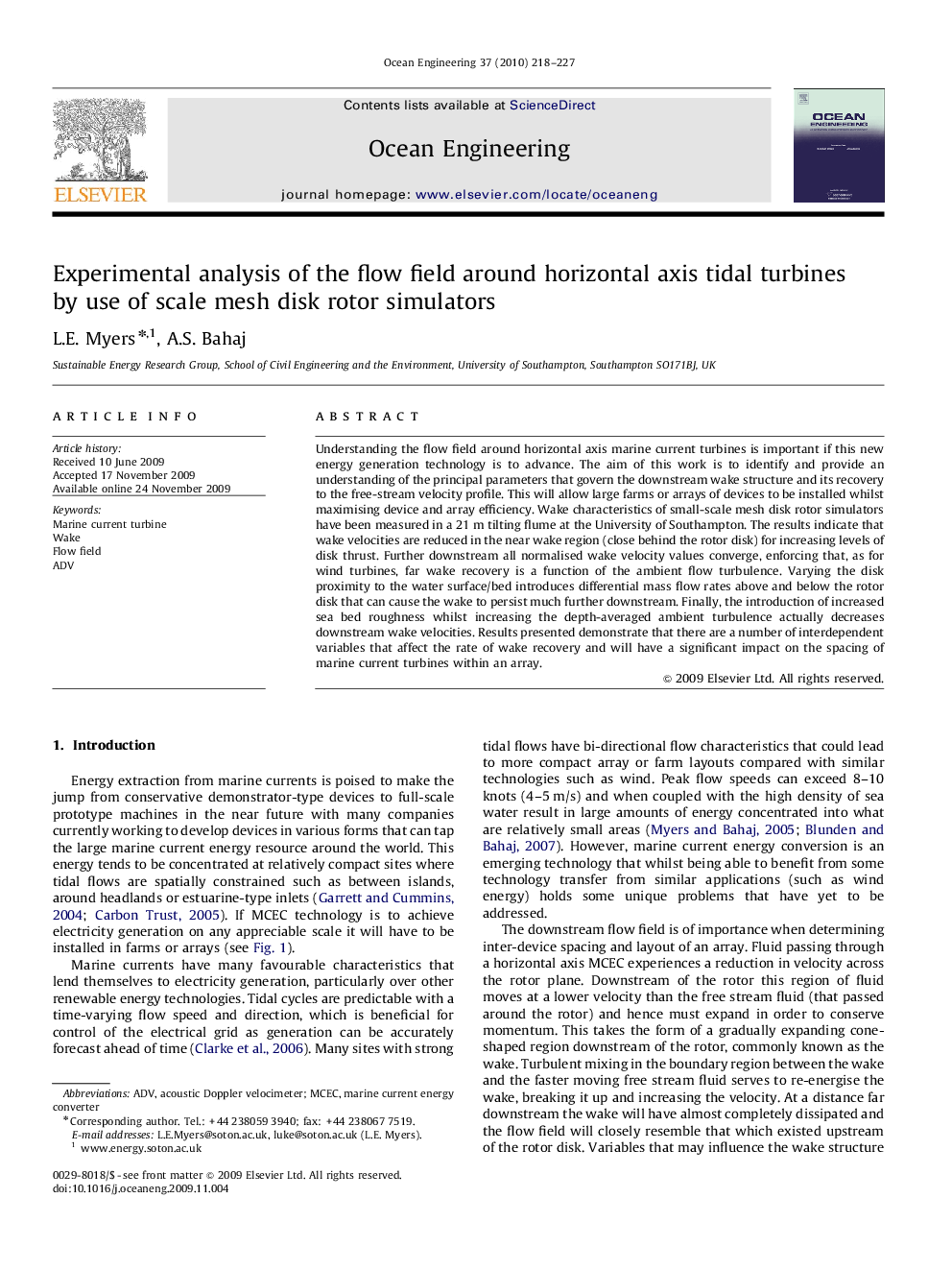| Article ID | Journal | Published Year | Pages | File Type |
|---|---|---|---|---|
| 1727112 | Ocean Engineering | 2010 | 10 Pages |
Understanding the flow field around horizontal axis marine current turbines is important if this new energy generation technology is to advance. The aim of this work is to identify and provide an understanding of the principal parameters that govern the downstream wake structure and its recovery to the free-stream velocity profile. This will allow large farms or arrays of devices to be installed whilst maximising device and array efficiency. Wake characteristics of small-scale mesh disk rotor simulators have been measured in a 21 m tilting flume at the University of Southampton. The results indicate that wake velocities are reduced in the near wake region (close behind the rotor disk) for increasing levels of disk thrust. Further downstream all normalised wake velocity values converge, enforcing that, as for wind turbines, far wake recovery is a function of the ambient flow turbulence. Varying the disk proximity to the water surface/bed introduces differential mass flow rates above and below the rotor disk that can cause the wake to persist much further downstream. Finally, the introduction of increased sea bed roughness whilst increasing the depth-averaged ambient turbulence actually decreases downstream wake velocities. Results presented demonstrate that there are a number of interdependent variables that affect the rate of wake recovery and will have a significant impact on the spacing of marine current turbines within an array.
